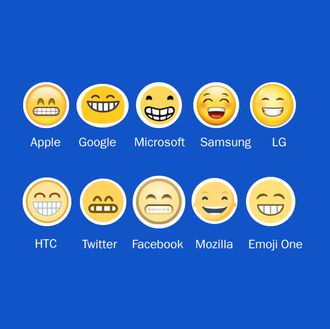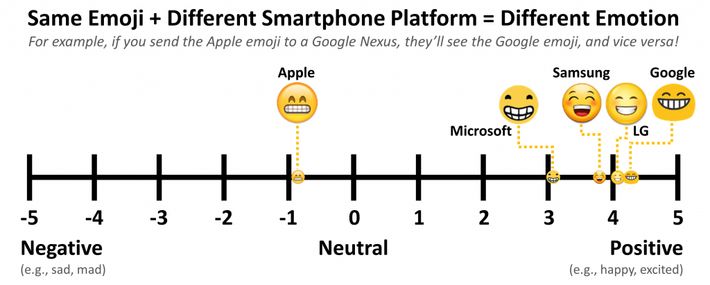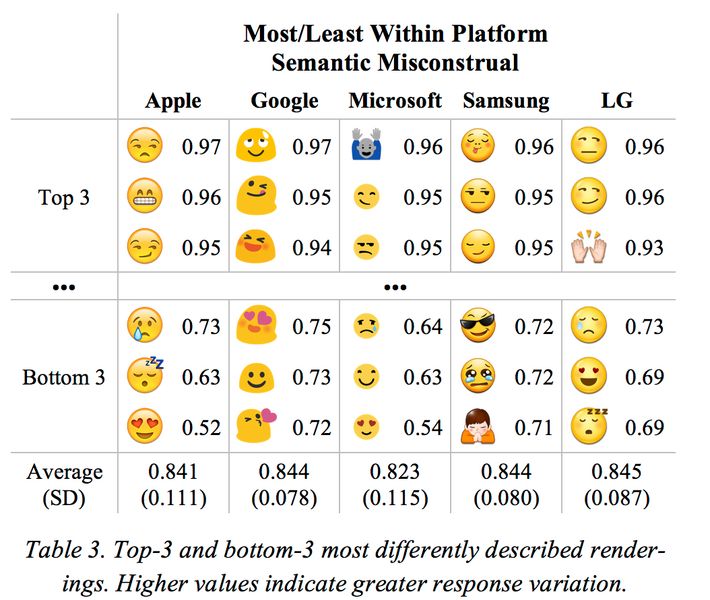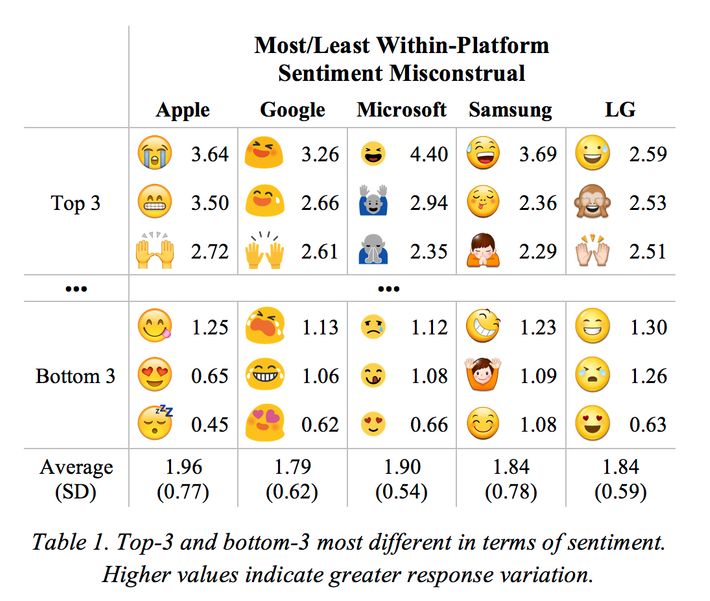
It’s tempting to hold up emoji as a kind of digital universal translator — so simple to use and understand, they can break down language barriers. Tempting, but wrong (or, in emoji, 👎).
As everyone who’s spent time arguing about 🙏 (high-five, or praying hands?) knows, emoji aren’t always clear — and the situation is worse when you’re dealing with different illustrations from Google, Apple, Facebook, and other tech companies. A new study from researchers at the University of Minnesota’s GroupLens laboratory shows that even when two people are looking at the same exact icon, they often have widely varying interpretations of its sentimental and semantic meanings. These disagreements are exacerbated when moving between platforms, as different tech companies have different art styles: “Grinning face with smiling eyes” looks very different on iPhones and Apple computers than it does on Android phones and in Google Hangouts. (The names and concepts behind emoji are officially approved by the unaffiliated Unicode Consortium, but it’s up to platform holders to illustrate their specific appearances.)
For one part of the study, survey participants were asked to evaluate the affects of various emoji on a ten-point scale, from –5, or negative, to 5, or positive. Even when participants were looking at the same icon, they had different ideas about its meaning. Take, for example, the aforementioned “Grinning face with smiling eyes”:

This seems like a fair response: the Apple “grin” is exactly the same as its “grimace,” and the “smiling eyes” are only visible at a large size. It’d be easy for an Android user to send Google’s “grinning face with smiling eyes” and for an iPhone-using recipient to interpret it very differently. More than a third of all emoji have this wide range of interpretation across platforms.
The study measured both between-platform and within-platform analysis, measuring not just the gap between interpretations of Android and Apple emoji, but the gap between an emoji’s intended meaning and its interpretation by a given platform. Take “loudly crying face,” which expresses a negative sentiment but which Apple users assign a positive sentiment — probably because it’s often used to indicate “crying laughter.” Also a problem for Apple users is our old friend “Grinning face with smiling eyes”:
Obviously, emoji are fluid: “eggplant” can mean, uh, a few different things. But if Apple users all believe “crying face” is positive, and Google users don’t, you could end up with some awkward conversations.
Users were also asked to interpret the emoji semantically — as in, “what does this emoji mean?” — and once again demonstrated that there are no universal definitions. The “smirking face” emoji had one of the highest misconstrual scores scores for every platform in the survey, except for Google — which makes sense if you think about it, because who the hell knows what a smirk actually means in any given situation.
The widest semantic interpretation between different platforms applied to the “person raising both hands in celebration” (🙌) emoji. Inversely, everyone pretty much agreed on what the “smiling face with heart-shaped eyes” (😍) meant.

Still no word on whether these hands 🙏 are praying or high-fiving. (For the record: praying.)
Overall, the researchers concluded that between platforms, and within them, there is a clear chance for people to misinterpret emoji on what they mean sentimentally and literally. So if you believed that emoji would somehow magically fix communication, think again. They might just be mucking things up more.






























